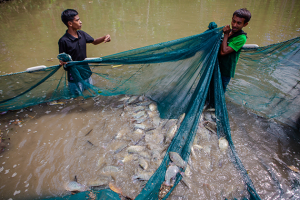SYDNEY, Australia, May 03, 2023 (GLOBE NEWSWIRE) — Ai–Media, the global leader in professional captioning solutions, is proud to announce the launch of LEXI 3.0, the new and improved version of its flagship live automatic captioning solution. With cutting–edge enhancements and new features, LEXI 3.0 is the world's most accurate and advanced automatic captioning solution, delivering results that rival human captions at a fraction of the cost.
Independent audits confirm that LEXI 3.0 consistently delivers results with 35% fewer recognition, formatting, and punctuation errors than the previous version.
Critically, LEXI 3.0 introduces new automated features, including speaker identification and AI–powered caption placement to avoid on–screen interference. Average quality results have increased significantly from 98.2% to 98.7% NER with this release.
LEXI 3.0 is an affordable on–demand solution perfect for live captioning a wide range of content types "" from linear TV broadcast, OTT, Live Sports, and live streams, to meetings, events, lectures, and more.
Ai–Media's Co–Founder and CEO, Tony Abrahams, said:
"20 years in the making, we've finally cracked the holy grail of making live automatic captioning a reality. LEXI 3.0 is a game–changer. We're seeing accelerating adoption of automatic captioning driven by a significant increase in quality, reduction in latency, and release of new AI features that previously required manual intervention, such as speaker changes and placement of captions to not obscure important visuals.
"LEXI 3.0 is available immediately for existing Ai–Media customers at no additional cost and is delivered with any iCap Encoder (hardware, Alta, and Falcon) connected to Ai–Media's iCap Cloud Network."
To learn more about LEXI 3.0, click here.
About Ai–Media
Founded in Australia in 2003, technology company Ai–Media is a global leader in the provision of high–quality live and recorded captioning, transcription, and translation solutions. The company helps the world's leading broadcasters, enterprises, and government agencies ensure high accuracy, secure and cost–effective captioning via its AI–powered LEXI automatic captioning solution and end–to–end range of captioning hardware. Globally, Ai–Media technology delivers 7 million minutes of live and recorded media content, online events, and web streams every month. Ai–Media (ASX: AIM) commenced trading on the ASX on 15 September 2020. For more information on Ai–Media please visit Ai–Media.tv.
A photo accompanying this announcement is available at https://www.globenewswire.com/NewsRoom/AttachmentNg/0907bea0–b62d–4701–9a16–a712c101c4fe

GLOBENEWSWIRE (Distribution ID 8831119)











